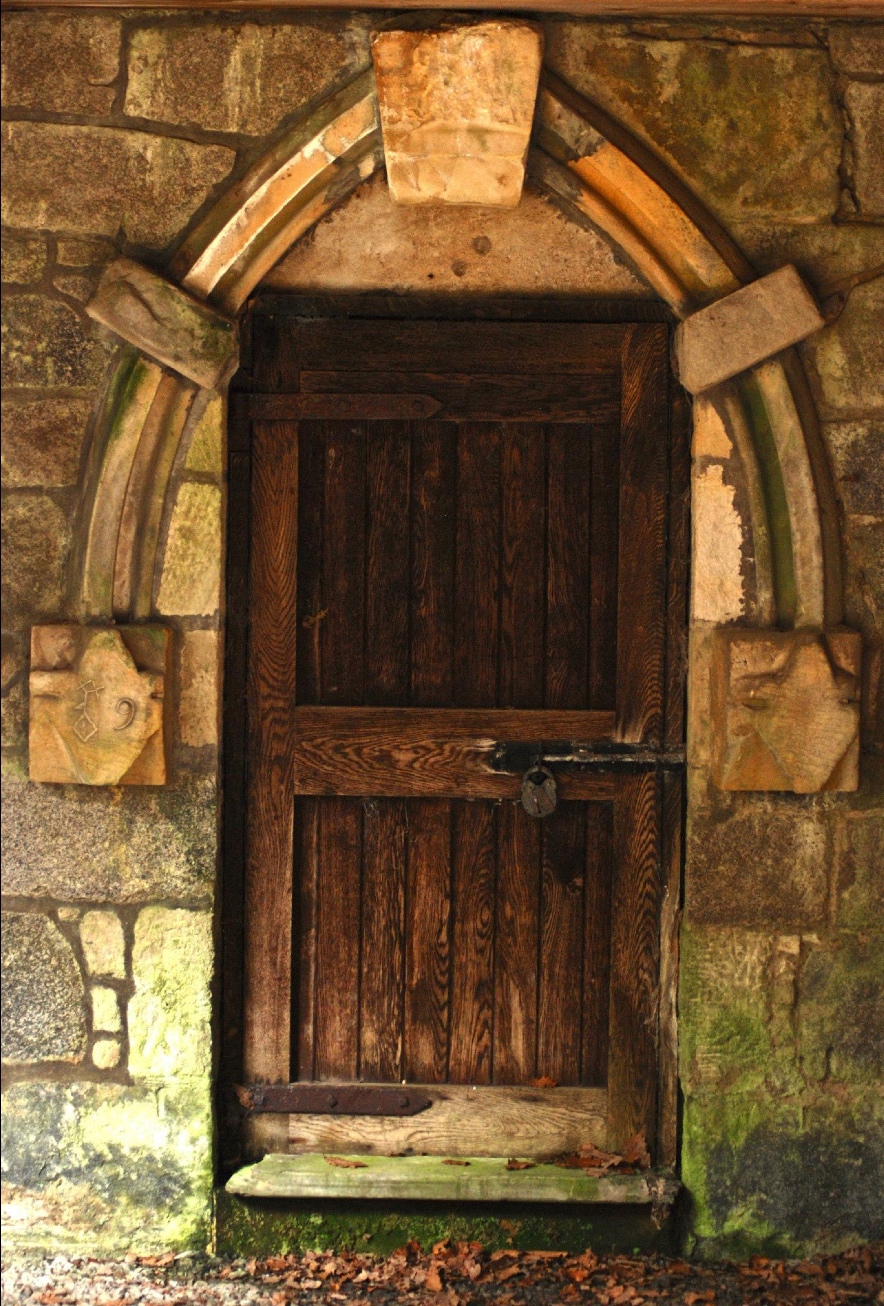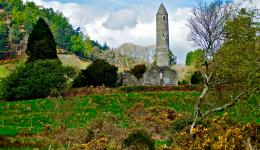Category:
I Peter 2: 4- 10 (NIV)
As you come to him, the living Stone—rejected by humans but chosen by God and precious to him— you also, like living stones, are being built into a spiritual house to be a holy priesthood, offering spiritual sacrifices acceptable to God through Jesus Christ. For in Scripture it says: “See, I lay a stone in Zion, a chosen and precious cornerstone, and the one who trusts in him will never be put to shame.”
Now to you who believe, this stone is precious. But to those who do not believe, “The stone the builders rejected has become the cornerstone,” - and, “A stone that causes people to stumble and a rock that makes them fall.” They stumble because they disobey the message—which is also what they were destined for.
But you are a chosen people, a royal priesthood, a holy nation, God’s special possession, that you may declare the praises of him who called you out of darkness into his wonderful light. Once you were not a People, but now you are the People of God. Once you had not received mercy, but now you have received mercy.
Everyone loves a scandal - unless, of course, it’s about ourselves. Pharisees and newspaper writers gather around (like they did the women taken in adultery - (strange that the man involved wasn’t outed), licking their lips at the juicy morsel of someone else’s failure, forgetting their own messed up inner lives and forgetting that if anyone of us was brought forward in headline news - well, it would not be anything but embarrassing for our families, our parents, our friends - and our own good selves.
Christians regularly come again to the Table of Remembrance, to the Eucharist. But it’s strange, isn’t it? – sad, really, that the Communion Feast which is meant to signify our unity with Jesus and with each other believer in the world-wide Body of Christ has so often throughout history – and still today, been a symbol not of unity but of disunity. So, Orthodox, Catholic and Protestant believers (and members of all the little divided sects in and between, cannot eat or drink together at the same Table, they think – because of differences of theology, understanding and their restrictive or strong opinions of what happens when Christians eat of the Bread and drink of the Cup. Jesus prayed that we might be one; we think we know better. It’s a scandal really.
It was a scandal in America, just before the turn of the 20th Century, when due to the influence of the temperance movement, wine, the emblem used forever in Communion by the Christian Church, had substituted for it, non-alcoholic grape juice. Methodist elder Thomas Welch (and then son Charles) saw it as a corrective and then a business-opportunity at the time. Charles Hodge, the great theologian of Princeton Seminary, saw this innovation as a great scandal - this messing with the symbol the Lord had given His disciples. Earlier, in Reformation days, Martin Luther had said in effect that if wine could not be found for the Eucharist than it should be forgone altogether so as to interrupt any such innovations.
The word ‘scandal’ comes from the Greek skandalon. it means a stone in the road - one big enough to make you trip. Small enough perhaps not to notice at first. Meeting it, we stub our toe or fall over in an awkward, silly, even painful way. It may leave a bruise, a cut or a blister that lasts for awhile – maybe for quite some time. And it hinders our walk, makes us limp and other people then, for sure, notice, if they haven’t already seen you fall.
There’s a neat and wondrous turn of events in the Christian Message. It has to do with Jesus (as Peter puts it in a kind of commentary in his letter, and as he quotes from several Scripture sources. His point is this: Jesus is a skandalon for some (t the One who became a scandal for the healing of the world, the One whose person and message people stumble upon and against, and either just curse the fact and try to move on, or lie there wounded, sometimes experiencing even then that by God’s grace even their wounds, and the Wounds of Jesus, become their salvation.
But this Stumbling Stone, that our world so often willfully rejects and would prefer to do without, others take up – as have People of the Faith and as did the builders of God’s Temple, God’s plans and purposes: taken him up and worked him in, building our lives with His Key Presence, this One who is our Way, our Truth, our Life. They do not place this Stone, our Lord Jesus, in a hidden, unimportant place (though, again, that’s so often where our world would place him, and we too sometime - inadvertently or deliberately; ‘No’, says Peter: ‘The true, good builders - God himself, have taken Him and fitted Him in - as the Chief Corner Stone.’
This Stone is not like the mere symbol as when we think of ‘laying a cornerstone.’ You know - the ones where people put in the deed or a list of charter members, and a newspaper of the day, and a few coins to commemorate the occasion. So that their descendents, decades or centuries later open them up, and marvel or laugh. No, Jesus is more to our lives and to His Church like that stone at the centre of a doorway arch; without it, all the other stones cave in and fall.
Jesus is a stumbling block to many - this standalone, this particular Stone, this Rock of Ages cleft for us, was made the Chief Cornerstone of the ‘temple’ that God is building. He is, we believe, the particular revelation of God in the Man called Jesus, who was raised from the dead by the Spirit of God, vindicated and justified and declared to be the Lord of Glory, in a happy Trinity-Plan-Collusion to redeem and rescue us from our sins and to make the world right-side-up again.

But here’s another Scandal. By definition, God is everywhere – and yet, God is also (says the Bible) often to be found, if not contained, in particular places, and at particular times and events. The Irish have this idea of ‘Thin Spots.’ It goes back to Celtic times, even before Christianity came to the island. They thought of wells and hills and mountains, of certain pools and streams, of places where the land met the sea and where certain events met and even collided as ‘thin places and times.’ They believe that God is everywhere present, but in some places and at some times – even more so. It’s as if eternity and the Eternal One were always near, very near - just a few inches or feet away
- and in some places, even nearer. Those places – those times were: ‘thin places.’
Mere superstition some may say. But I see these ‘thin spots’ at particular times and in particular places and stories of Scripture.
There are thin spots (the scandal of the particular, if you will) in the Old Testament. There it is in Creation itself for God has willed that He be present in each and every particular person God creates. We were made in God’s image, however imperfect now the reflection or refraction. There is something of God in everyone you meet, something precious, something revealed about them self, but about God too. And not only in every person but also in every thing that God has created, says Paul in Romans 1. There’ something of God in everything He’s made. We believe pantheism to be wrong in saying that creation is God; for God is other that God’s creation. But there is pan-entheism where God is present in all God’s world, in all of God’s creation. Paul in Romans 1 states that -
What may be known about God is plain - God has made it plain. For since the creation of the world God’s invisible qualities—his eternal
power and divine nature—have been clearly seen, being understood from what has been made, so that people are without excuse.
From the story of Moses, we remember that God was in a burning bush. ‘Moses, take off your sandals’ said the Voice. You’re on holy ground!’ But isn’t every inch of our Father’s Creation, and every task in every place, a holy task on holy ground?! And there was a place called Bethel (House of God), a place of rest and encounter for Jacob who would become Israel - a place where angels ascended and descended; a place of wrestling with an Angel, with God. Afterward, Jacob noted in awe: 'Surely God was in this place . . . ‘
Jacob’s descendants, collectively called Israel, upon their escape from Egypt and through their Exodus wanderings, dragged along a ‘tent of meeting’ – a unique place when set up where God promised to show God’s Self as ‘present’ – with and among His chosen People. The idea and reality of that dwelling John borrowed in his Gospel prologue, speaking of God’s Word (Jesus) ‘who became flesh and dwelt (pitched His tent) among us . . .’ Israel’s King David was embarrassed when in Jerusalem and when the land was duly conquered and settled that he was in a fine home made of Cedar while God remained enshrined in that old ‘tent of meeting.’ He thought he'd build God a Temple.
David knew perfectly well, that God could not be so contained in any tent or temple - in any place at all. Will God indeed dwell on the earth? Behold, heaven and the highest heaven cannot contain thee; how much less this house which I have built! Later through prophet Nahum, God spoke to Solomon, David’s son: - For now I have chosen and consecrated this house that my name may be there for ever; my eyes and my heart will be there for all time. So we have God in that particular place: in the Holy Place - the Holy of Holies, enshrined in stones and pillars and behind walls (though departed - ‘Ichabod!’ – even reminding folk of those days through the Second Temple that would not be left standing, said Jesus, speaking of its collapse by Roman hands in 70 AD, though He would Himself become Israel’s new Temple: for He would be raised again.
And we may link Israel’s temple(s) back to Genesis 1 - the creation of this world as God’s temple, a place – a seat also for His dwelling. No doubt, the Jewish creation account borrows from other ancient sources, myths - but it’s different: it’s a kind of polemic. For, this God, Israel’s God is One, is unique, different; this is the only God, not one of many local deities, as was thought by the pagans. As in the other stories, God creates a temple, but this one is the whole earth. He furnishes and animates it and near completion sets up an image of God’s Self in this temple, the earth. And guess what? The image is Adam – human created of dust. It’s you and I. ‘Male and female God created them.’
Now, then scandal of the particular continues in the New Testament as well. Immediately, we come upon the Story of Jesus – the Story of our Lord. And again, there are ‘thin places.’ We know of a Manger in Bethlehem where in Christ, our Emmanuel (‘God with us’) to be sure, was –as John Wesley put it, in sheer amazement: ‘God contracted in a span.’ The length of an arm that could cradle an infant was the size of the love and place where Mary cradled God.
We read of Jesus of Nazareth, in all of the similar (and different ways in which the Gospel writers borrow the facts and tell the Story – of this man from Galilee, this nobody this country paysan. He was from a particular home: somebody’s boy, a carpenter’s son. Raised in the context of Roman occupation, he grew up in a particular place and time with all the influences of Jewish family and synagogue, embedded in Jewish culture for some 30 years. This man they knew - this rabbi, this friend of sinners, this ordinary person in homespun garb, this claimant to deity. And then this prisoner in the dock - this criminal, this gentle, wise, full-of-truth, beaten-raw, physical mess of a man, spread-eagle hung on. a. cross.
Dead! – and yet . . .

And now, to be sure, there is scandal today – in our everyday. One after another. The scandal of God in Christ, in that particular Jew, was not just in that day; it remains in ours too. It remains for us and for our world, our times, to stumble across, to stumble upon this stumbling block named Jesus, to choose or not to lift and place Him into the chief corner stone place for the building of our lives. God was revealed in Jesus, and Jesus is revealed today in His Body, the Church, and in and through each of us, His 2016-and-beyond disciples. We too are frail human beings, ordinary folk: birthed, living and dying like everyone else. Not a People once but now we have become a People: - God’s People. Special. But still, frail, ordinary, made of dust, prone to wander people, like flowers and grass that withers and dies so soon.
We thought about ‘Jesus sightings’ at Easter - of eye-witnesses of his resurrection: the Marys, Cleopas and his partner, the eleven disciples, Jesus’ brother James, 500 saints at one time. We suggested there must now be a new, different way of seeing the risen Jesus, through the sight and insight faith brings. Also, there’s looking at the life of the saints (like Mother Theresa) and seeing Jesus. There’s looking at the poor, the marginalized, the imprisoned of society and seeing Jesus in them, as we minister. God in these particular people and times.
Just so, also in the Communion Feast. As with the other examples of the Old and New Testament stories, there’s really not much to look at, at first. not much seems to be happening – or that could happen. And yet, in this particular act in this particular place with these people on any particular day, God who is everywhere and at all times present, is more so, in this act, as we remember, as we realize, as we make resolve. Like the others, it seems so obscure, so insignificant, this further scandal of particular? And yet it becomes for us the Seat, the Site of Glory– the place, the time of God’s Presence once again.
Of course, this gathering, this act no more contains or explains God than do you or I most days, as we know ourselves. It’s just the ordinary stuff of Creation – star dust and dung, a world of elements and elephants, of diamonds, detritus and debris. And yet . . .
It was merely an ordinary bush in the desert - though it did flame with fire. And yet . . .
It was just a stone pillow in the middle of nowhere, on the road to wherever. And yet . . .
It was just a flimsy tent in the wilderness, and then a stone building in a Jerusalem, in an obscure province of Rome, tent and temples built with human hands - with wisdom, precision and care, but ultimately created by people that are but dust. And yet . . .
He was only a Jewish peasant from Israel’s northern hinterland – a poor, peasant rabbi from Galilee. And yet . . .
And Communion is a strange kind of meal – with this small piece of bread and this tiny cup – to be taken in hand, on lip; chewed, drunk swallowed - in this particular place, on this particular day, with these particular people.
This piece of bread. this wee cup - a scandal of the particular and the peculiar . . .
And yet - and yet . . .









